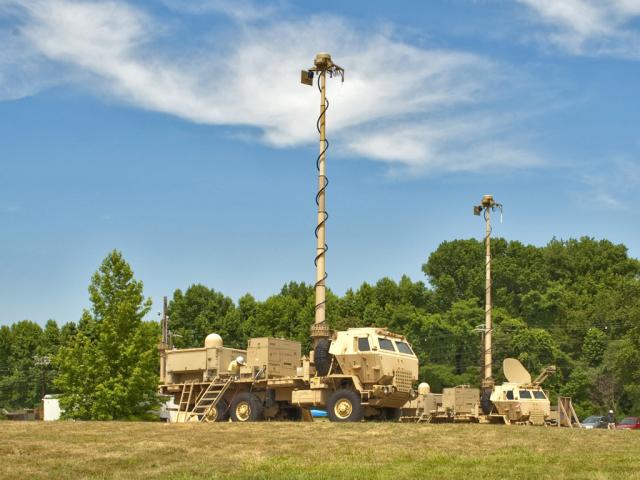The U.S. Army continues to move forward on Low Rate Initial Production of Increment 2 of the Warfighter Information Network-Tactical, or WIN-T.
WIN-T is a mobile satellite communication and terrestrial network able to move voice, video and data across long distances for forces on-the-move in combat, Army officials said.
WIN-T includes network management tools, radios, routers and small, vehicle-mounted satellite dishes able to transmit signals via terrestrial and satellite from the company level up to division echelons. It will also support communications connectivity to vehicles on-the-move, to other command posts, and higher headquarters, said Lt. Col. Robert Collins, product manager for WIN-T Increment 2.
The WIN-T Increment 2 contract, which was awarded to General Dynamics and finalized on Dec. 30, will support procurement and fielding of 20 brigade-sized maneuver units and includes two years of LRIP with an option for one additional year of Full Rate Production. The initial Low Rate contract Delivery Order calls for delivery of eight brigades and one division headquarters worth of WIN-T gear, Collins said.
The WIN-T network is designed to be self-healing and self forming. It is managed and configured via custom and commercial-based Network Operations software to ensure the most efficient and effective path is available to transmit valuable, combat-relevant information.
“The network components are designed with redundant paths in and out, so WIN-T has routing capability. If you are maneuvering through the desert and you hit some kind of blocking terrain where you don’t have a terrestrial line-of-sight connection, the network can automatically re-route information to the next available path, such as a satellite,” said Collins.
The NetOps software allows the signal officer to monitor activity and prioritize information flows across the network.
“There are protocols and policies that we use to make sure the network is constantly making decisions and pushing information out through the most efficient route possible.”
“Additionally, the WIN-T Inc 2 system allows network resources to be weighted much like combat forces are in support of operational missions. The network can allocate bandwidth and prioritize traffic so that that critical messages get precedence on the network,” Collins explained.
WIN-T Increment 2 has a key Initial Operations test coming up in early 2012 with the 2nd Brigade, 1st Armored Division at Fort Bliss, Texas, he said.
The WIN-T program is also continuing development on Increment 3 – that includes additional capability such as an “aerial tier”- in which the network will be extended to leverage the use of aerial “nodes” on Unmanned Aerial Systems such as the Gray Eagle to enhance overall connectivity and reliability, Collins said.










